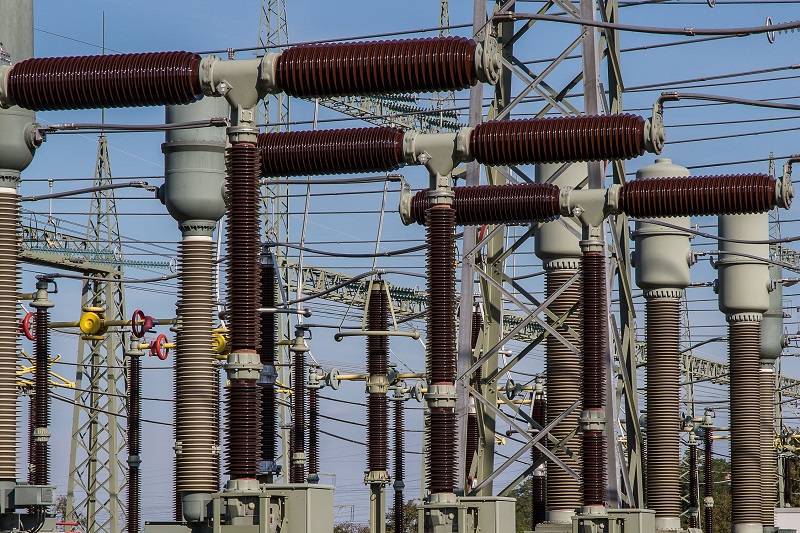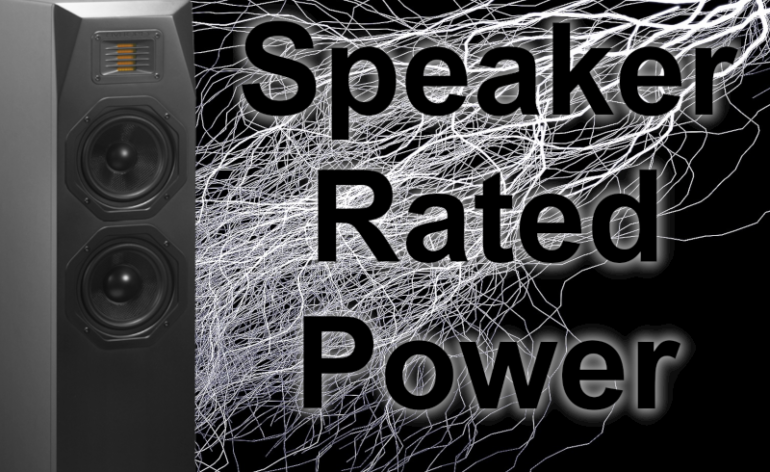All Your Questions about Speaker Rated Power Answered!
Deciphering speakers specifications can be pretty daunting for the first-time AV enthusiast. One of the more common questions that we hear is about speakers is, “What do maximum input power (or maximum speaker rated power) mean? Or I sometimes see it as ‘suitable amplifier power range?’ Are they different? Why do they make it so confusing?”
Well, I wish I had a good answer for the last part. It isn’t straightforward, and it should be. But, if you have ever been confused, read on, and I will try and make sense of it for you.

Terms Explained
As I said earlier, we audio enthusiasts love our specs and acronyms. It makes us feel important because we understand vague terms that don’t matter to anyone outside our hobby. Do you need to understand them inside and out? No, but it is good to understand some basic terms to make an informed decision.

Speaker Sensitivity
We express speaker sensitivity in terms of dB. For example, my speaker is 91dB sensitive. This means that they require one watt of power at one meter (three feet) away to reach 91dB of volume (in general, there are ways to fudge this rating). Power requirements rise the farther you sit from your speakers. In simple terms, sensitive speakers mean you need less amplifier power to get louder. I am not going any further than that. If you want a deep dive from an expert, ask Rob H at AV Rant. Or you can check out our article.
Peak Power Handling
Peak Power Handling is the most specific term of them all. This term tells us the maximum peak input and output that the speaker can handle for short durations. Think in terms of an action movie. Your speakers are plugging away putting out around 85dB (reference level). And then, BAM! Explosion! Or gunshot or car crash. It doesn’t matter. For one moment, there is a loud sound that they need to recreate. For just a few seconds, the speaker will be pulling much more power from the amplifier. The Peak Power Handling tells you how much power it can take before something risks breaking. It can probably take all that power and more for a quick sound. But the speaker definitely can’t handle that much power over a longer length of time.
Speaker Maximum Input Power / Maximum Rated Power
The two terms are interchangeable and mean the same thing. Maximum Rated Power is the maximum, sustained power that your speaker can handle before it begins to distort and pull itself apart. So if your speaker says its Maximum Rated Power is 180 watts, that means you can pull 180 watts of continuous power into it without damage. Once you exceed that amount, you risk damaging the speakers. Again, this is if the speaker is receiving that much power continuously.

Recommended (Suitable) Amplifier Range
So THIS term is the most confusing of them all. So your speaker says that its maximum input power is 180 watts, and the recommended amplifier range is 15-250 watts? How the heck does that work? Shouldn’t the maximum input be 180 watts? What this means is that they can draw, for short periods, more power than their maximum rated input. And, yes, they can do this without damaging themselves. The 180-watt rating indicates how much power the speakers can handle all day long. But they can take up to 250 watts for short periods of time. Are you confused yet? Keep reading, and I promise it will make sense!
Do These Numbers Matter?
As far as you are concerned? Nope!
Put down the pitchforks and torches, folks! I don’t make the terms up. I explain them!
Here is an example of why they don’t matter: My front speakers are 91dB sensitive with a suitable amplifier range of 15-250 watts, and the maximum input is 180 watts. I sit eight feet away, powering it with a 125-watt amplifier. Do you know how much power my speakers draw at that distance? Well, after doing the math, it takes a whopping 3 watts to reach a reference volume of 85dB! Let that sink in for a second.
The reality is that the rated speaker power isn’t something that really comes up in real-world usage very often. It is important to note that amplifiers don’t push power to the speakers, the speakers pull (or request) power from the amp. When you turn up the volume, you are essentially telling the speakers to ask for more power. As long as the speakers don’t request either more than they can handle, or more than the amplifier has, you’ll be fine.
Editor’s Note: Each speaker manufacturer chooses how they report these power numbers. There is general consensus on what each invidual metric means, but no real incentive to use one power rating metric over another. This just adds to the confusion. You often can’t compare one power rating from one manufacturer to another because they aren’t reporting the same numbers in the same ways. It’s infuriating and one of the reasons we wish this metric would be stricken from all specifications sheets.
So Less Power?
Not exactly. Here is where moar power is gooder. If you choose a very underpowered amplifier and start to increase distance or play at louder volumes, you will clip your amp. Clipping occurs when your speakers demand more power or output than your amplifier can deliver. Clipping will cause audible distortion and can potentially damage your speakers. To avoid amplifier clipping, you either need to reduce your volume or choose a more powerful amplifier.
In real-world terms, this means that I could very safely run my 180-watt max input speakers with a 300-watt amplifier because in no scenario would I be want to run my speakers at a volume that would damage them. It would simply be too loud to tolerate. It also means that I could safely run my speakers with a 10-watt amp and not harm them (as long as I didn’t play them very loud and I sat very close). But, if given a choice, I would always choose more rather than less powerful amplifier.

In Plain English
The speaker power handling rating (or whatever they call it) does tell you something generally. It tells you how much power your speakers can take before they start to risk damage. The problem is that you have no way of knowing (without measurement equipment or math and some assumptions) how much power your speakers are actually getting. You can’t look at your AV receiver’s or external amplifier’s rated power and compare that to what the speaker can handle. Your distance from the speaker and volume level determines how much power your speaker requests. So, what do you do with that number? Not a lot. While that might not be a satisfying answer, it is true. Sorry.
Our Take
Being an audio enthusiast can be a confusing hobby, but it doesn’t need to be. Once you understand the basics of the hobby, you realize that a lot of the numbers they put on equipment don’t translate to real-world performance. Rated speaker power is a prime example. It’s a number that technically means something, but it isn’t something that you need to worry about. Continue to learn, find articles, podcasts, or forums that push a common-sense approach, and if you don’t understand, don’t be afraid to ask. Most of all, be skeptical of the salesperson that tells you that you NEED super expensive amplification to get the most out of your system. I think we have proven that is just not the case.



This article has been very informative as I am building my own 91dB speakers. I am also having an 11 Watt tube amplifier built. My concern has been the output power of my amplifier, will it supply adequate power? After reading this short but precise article quashed that concern. Although a new question arose; how does Ohm’s Law factor in? Some tube amplifiers have output connections for 4 – 8 – 16 Ohms!